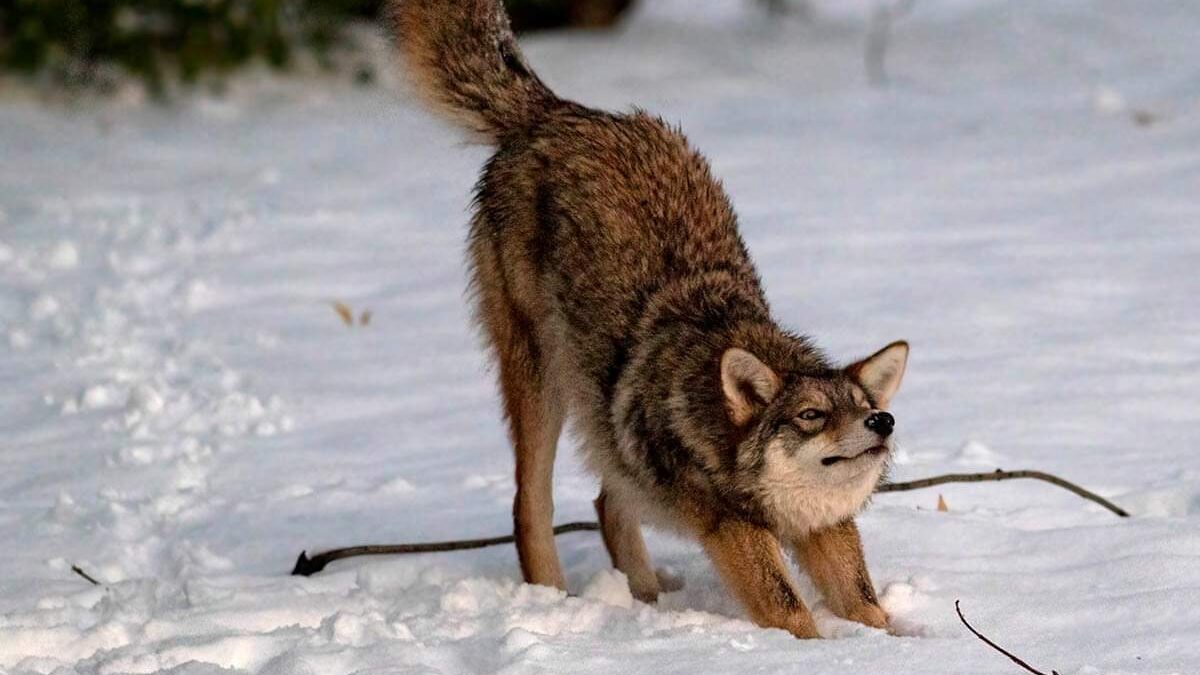In early November, the City of Ottawa announced its wildlife management officials had captured and euthanized three “highly habituated” coyotes. This was after residents of the Riverside neighbourhood expressed concern about the increasing presence of th animals in the area.
River Coun. Riley Brockington said coyote sightings are on the rise and that without a long-term plan, there is little hope of the problem getting better.
“The number of reported incidents of coyotes following people and trying to go after their small pet is like no other year I’ve seen,” Brockington said. “We’ve had some family animals taken right in front of people and killed. And after speaking with staff, it’s clear the city does not have any type of management plan.”
‘The number of reported incidents of coyotes following people and trying to go after their small pet is like no other year I’ve seen. We’ve had some family animals taken right in front of people and killed. And after speaking with staff, it’s clear the city does not have any type of management plan.’
— Riley Brockington, River Ward councillor
CTV News reported in August that Ottawa’s 311 service had recorded 288 complaints about coyotes since the beginning of 2021.
Brockington said he sees the need for a better management strategy and brought his concerns to a council meeting in October. The proposal involves hiring wildlife management experts to create a strategic plan for coyote-human cohabitation that can be used by city staff and citizens.
“I’ve never supported a call for the elimination of these animals. They’re part of our ecosystem just as much as you and I are. However, we need better public information and a strategy so that when these interactions continue, we are prepared,” Brockington said.
Experts such as Lesley Sampson of Coyote Watch Canada said however that government officials need a more specific action plan.
Sampson said: “It isn’t enough to tell people you must coexist. That just isn’t a responsible approach because people don’t even know what that means. There are so many questions that aren’t being answered. Can I feed them? Can I let my dog play with them? Can I leave food out, so they come closer to me and I get that great photo?”
Sampson founded Coyote Watch Canada in 2008 after studying canine and coyote behaviour for more than 10 years. The message of the Niagara Falls-area organization is that co-existence is possible for humans and coyotes with the right knowledge and education.
The organization works with municipalities experiencing high coyote activity to find ways to safely care for the animals in the area. Sampson and the Coyote Watch Canada team have also created resources and workshops to educate the public about how to interact with coyotes. These resources include informational guides, such as For the Love of Leash which explains the importance of keeping a dog on a leash.
‘We can never give up on a community. We can’t give up on the City of Ottawa and cannot give up on citizens and nature. We must look at these issues and truly bring together key participants, including our Indigenous community, for guidance and teachings. For me, it’s imperative to push the idea that we all can do better.’
— Lesley Sampson, Coyote Watch Canada
In a 2020 report published by Sampson and Lauren Van Patter, they discuss the positive effects of alternative methods to trapping and euthanizing, such as aversion conditioning. This practice entails making an atmosphere less appealing to coyotes so that they will seek food elsewhere. Different strategies suggested by the researchers include not leaving food out or feeding coyotes directly from your hand, and taking away other objects that lure coyotes, such as garbage and bird feeders.
They also emphasize the importance of walking dogs on leashes. In a study that documented coyote-dog interactions, almost 90 per cent occurred when dogs were off their leash.
“A lot of coyotes are fed by people, and they don't bite, but the ones that do are the ones we must look at and analyze with a rigorous scientific lens to truly understand what's happening here,” Sampson said. “When coyotes are fed by people, there is a direct correlation between the hand and the animal eating that food and the safe boundaries that we usually have between coyotes are diminished.”
The city's strategic plan for coyote-human cohabitation will be complete this spring. Until then, Brockington urges citizens to use other resources for information. The City of Ottawa, for example, suggests some tips for making a property less appealing to coyotes. Sampson said she hopes the city's plan will promote proper guidance.
Sampson says “we can never give up on a community. We can't give up on the City of Ottawa and cannot give up on citizens and nature. We must look at these issues and truly bring together key participants, including our Indigenous community, for guidance and teachings. For me, it's imperative to push the idea that we all can do better.”




